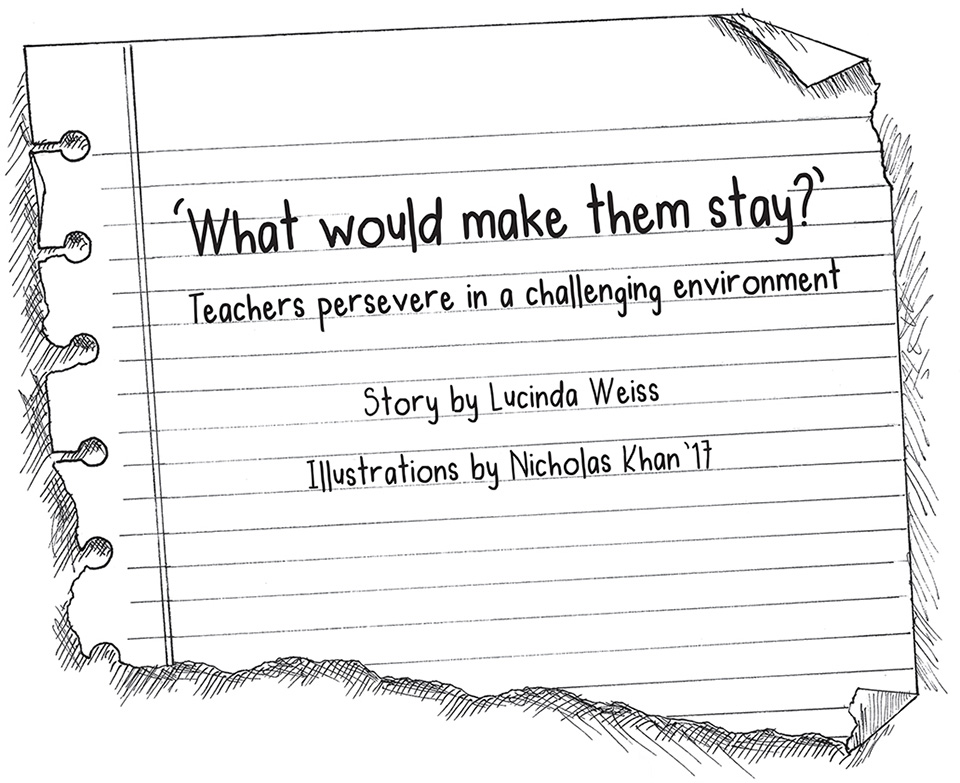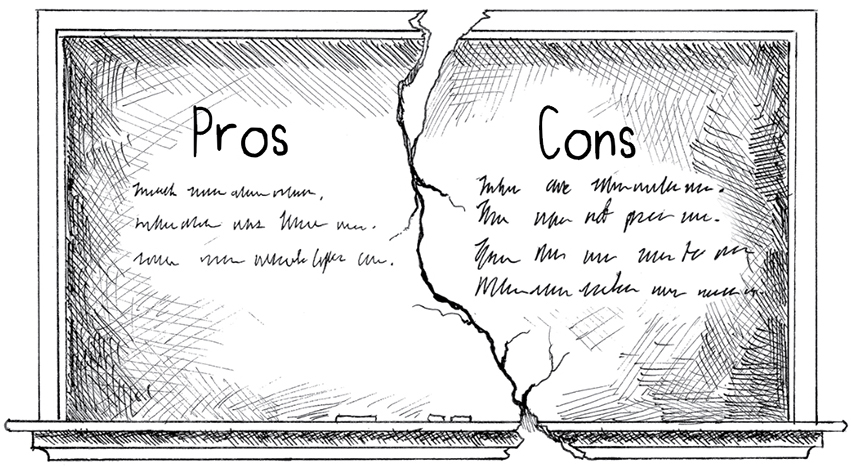- Apply
- Visit
- Request Info
- Give



Published on April 30, 2024

In 1889, the first cohort of women was enrolled in the new Willimantic State Normal School, established by the Connecticut General Assembly to train teachers in a two-year program. “Normal” schools, from a 16th-century French term “école normal,” were training primary school teachers throughout the United States. In 1891, 22 women graduated in the Willimantic school’s first finishing class.
Connecticut had 1,110 one-room schoolhouses in 1899, so there were a lot of teacher spots to fill. Flash forward more than 130 years, and the state reported a shortage of about 1,300 teachers in 2023, prompting the General Assembly to consider whether to streamline the state’s teacher certification process.
Eastern Connecticut State University, the liberal arts university that evolved from the Willimantic State Normal School, continues to attract students who want to be teachers. For fall 2023, 9.5% of the 5,233 first-time applicants to Eastern marked education as their preferred major. Mark Fabrizi, professor of education and department head, said the program prepares “high-quality, well-prepared and resilient” teachers. In 2021-22, Eastern’s Education Department graduated 106 certified teachers, about the same number as in the previous two years.
But the teacher shortage, in Connecticut and nationwide, is fueled by more than a certification hurdle. Teachers already employed by school systems are dropping out at an alarming rate. “Increased stressors causing teacher exodus,” headlined a Connecticut Education Association (CEA) survey last fall. Addressing the teacher shortage is the CEA’s top legislative priority in 2024. “K-12 teachers are quitting. What would make them stay?” was the title of a March 2023 McKinsey & Co. research report. “People don’t want to be teachers anymore. Can you blame them?” asked Jessica Gross, author of a Sept. 13, 2023, New York Times opinion article.
Nationwide, the number of students graduating with bachelor’s degrees in education has fallen more than 50% from 176,307 in 1970-71 to 85,058 in 2019-20, according to the National Center for Education Statistics. Staffing has always faced rises and falls, said a November 2022 report by the Annenberg Institute at Brown University. But “the current state of the teaching profession is at or near its lowest levels in 50 years,” wrote the researchers, Matthew A. Kraft at Brown University and Melissa A. Lyon at the University of Albany.
What’s making people leave the profession? McKinsey cited poor compensation, an unsupportive culture, the stress of the job and a lack of respect for teachers. The Annenberg/Brown report added to the mix the threat of school shootings — 159 teachers were shot on the job from 1970 to 2022, it reported.
These problems have been percolating for some time, but the COVID pandemic provided the tipping point, several Eastern alumni and faculty said.
“Being a teacher now is far more difficult than before the pandemic,” said Logan Tonucci ’15, a teacher for nine years who taught at a middle school in New London and is now at Griswold High School. Where students used to be receptive and kind and cared about learning, they are now distant and uninterested, she said. She left teaching briefly in 2021-22 but returned because she missed her students.

Teachers now are expected to be parents, create curriculum, become special education experts, provide resources that districts can’t supply and make multiple lesson plans per class to accommodate everyone’s needs, she said.
“Teachers are superheroes, but unfortunately, not even superheroes can fix the problems that society creates,” she said. “I would not go into education knowing what I know now.”
She is not alone. That push and pull — the pressures that have piled on teachers versus their love of teaching — is troubling others, too. Nearly three-quarters of Connecticut teachers surveyed by the CEA this past fall said they were likely to leave or retire early, up from 38% in a survey just three years earlier.
It’s not for lack of preparation. Graduate survey data compiled by Eastern’s Education Department show a high level of satisfaction with the program. Conditions on the job, however, are less satisfying, even for those with a strong desire to teach.
“Teaching is simultaneously the thing that fills me and depletes me,” said Kay Bishop ’10 M ’19, who taught in New London for a year and has been at Norwich Free Academy for four years. Her second year of teaching was during the pandemic lockdown, and, she said, “I am not sure it has been easy for me yet.” She has seen a decline in student engagement. When students are used to watching videos while playing a game, it is difficult to get them to focus on literature.
The hardest part of the job is not having enough time, particularly due to the hours spent planning outside of school, she said. “The trouble is when you care so much and you give up your downtime to be there for the kids, it can be draining emotionally.”
“Would I do it again? Yes,” she said. “Is there a lot that needs to change to make it more sustainable? Yes.”

Sarah (Froehlich) Halley ’16 has taught for eight years, two at North Windham Elementary School and six at Brooklyn Elementary. She has experienced highs and lows. “I have had those memorable classes where everything aligns and you have an amazing year, and I have had the classes that test you every day and make you feel that every time you take three steps forward you take one step back,” she said.
She has seen a drop in morale and growing stress among teachers over the past few years, especially since the pandemic. “There have been several teachers in my building alone that have left teaching completely due to this,” she said. “Don’t get me wrong — I absolutely love what I do, but with the demands of the job and what I know now, I would have picked another career,” she said.
What could fix the problem? Higher pay for teachers is routinely cited in research reports and by teachers themselves. “Our profession is one of the very few professions that has not seen a wage increase that matches the cost of living since 1993,” said Tonucci. Ninety-nine percent of the 7,635 K-12 Connecticut educators surveyed by the CEA last fall put higher salaries at the top of a list of proposals to address the teacher shortage.
Other solutions polling higher than 90% in the CEA survey were more planning and preparation time, limiting non-teaching duties, more effective disciplinary policies, reducing class sizes, more mental health support for students and more teacher autonomy.
The realities facing teachers today are not lost on current education students, but the students are undeterred.
Teacher salary issues and stress are “definitely a concern,” said Jenna Rice, a senior majoring in elementary education and history/social sciences. When she tells people she is going to be a teacher, the response is, “Really? Why?” she said. But she is “hoping that it’s everything I envision in my head.” She has wanted to be a teacher since she was in elementary school, inspired by her third-grade teacher in Vernon.
“No one would be where they are today if it weren’t for a teacher,” she said.
Would I do it again? Yes. Is there a lot that needs to change to make it more sustainable? Yes.
Kay Bishop
Nicole Pepe, a senior liberal studies major who is entering Eastern’s Early Start master’s degree program in education to earn a master’s degree in five years, said she was inspired by aunts and a grandmother who taught and are now retired and by working as a counselor and director at a children’s camp in her hometown of Cheshire. “I have always loved working with children,” she said. “Their excitement about the world makes me excited.”
Pepe is president of Eastern’s Aspiring Educators club and secretary of the statewide Aspiring Educators, which includes prospective teachers at colleges around the state and is sponsored by the CEA. She is aware of teacher dissatisfaction; the club works with the CEA on issues before the legislature to try to make things better, she said. Higher salaries for teachers and more resources for school systems would “make it not as daunting” a profession to go into, she said.
Paying student teachers would help alleviate the financial stress on education students, who must pay for their education costs at the same time they student teach for 10 weeks and are often unable to work a second job during that period, said Emma Sands, a senior. Sands is president of the statewide Aspiring Educators and plans to teach secondary history.
“While I recognize that low salaries and high dissatisfaction rates are the reality in education, and that is sad to hear, I am more discouraged that the only narrative around education seems to be a negative one,” she said. “The teaching profession is filled with so many positive benefits that deserve to be celebrated,” she added.

Emily Bartoshevich, a sophomore double majoring in liberal studies and elementary education with a concentration in natural sciences, wants to teach science in upper elementary and perhaps middle school. That makes her a rare find. Science teachers are one of the biggest shortage areas according to the Connecticut Department of Education.
She has wanted to be a teacher since she was young. “I was the kind of kid to line up her stuffed animals and play school,” she said. She is concerned about teacher dissatisfaction. “It makes me sad to see so many teachers leaving, as I have always thought of education as a field one goes into because of their passion and love for teaching,” she said. “I’d rather have a career that I loved and made less money doing than a career I hated but came with a high salary.”
No one would be where they are today if it weren’t for a teacher.
Jenna Rice
One of her inspirations is her grandfather, Kenneth Savage, who at 76 has been teaching science for 54 years in the same classroom at Westbrook High School. “In a time where so many teachers are leaving the profession, it is encouraging to see how much my grandfather truly loves his job,” Bartoshevich said.
Yet even her grandfather finds that teaching is different now. “The number of tasks teachers are responsible for performing has increased significantly,” said Savage. The amount of paperwork required and the deadlines for it have made a huge difference, he added.
Still, he would “absolutely” go into teaching again, he said. Savage is applying to renew his certification this year, something required every five years. He tends to get some of the most difficult students in his class, perhaps, he said with a laugh, because he worked for 40 years as a part-time police officer. He has “reasonable skill” in getting students to be productive in his class, he joked.
“When that happens, it’s very rewarding,” he said. “It’s one of the most rewarding parts of being a teacher.” The student becomes not only a better student but a better person, he added.
Nothing is better than seeing the progress students have made, said Kaitlyn Kennedy ’14 M ’16, who teaches ninth grade at Manchester High School. “The amount of impact you have as a teacher is just exponential,” she said.
She did not teach during the pandemic, a period that soured many on teaching. She left teaching for three years to work as a coordinator with the Connecticut Rise Network and later as a freshman success coach. But she “felt called back to the classroom,” returning this past year, and she is now also working on a doctorate in education.
Kennedy, who has played and coached soccer for years, including at Eastern, said she was inspired by her coaches and her mother and grandfather, who were educators. And her students are enthusiastic, she said. “You have to celebrate the small wins — it’s a stressful job.”
She also credits strong support from administrators. “There has never been a time where I’ve needed support that I haven’t gotten it,” she said.
Administrative support is critical, said Fabrizi, chair of Eastern’s Education Department. The problems teachers face are preventable, he added. “We’re chasing teachers out, but a good mentor program in a school system can go far in counteracting that.” He holds administrators responsible for this. Young teachers should not be assigned the lowest-level students, he said, which routinely happens when older teachers take the honors classes and the best students.
“I always felt it should be the reverse,” he said. In 11 years as a department chair at North Branford High School, where he taught English, he never asked a teacher to teach a class that he wouldn’t teach, he said. He recalled a math teacher, a colleague early in his career, who was hired for her first job. She was not given a permanent classroom, had an awful schedule and was assigned all the lowest-level students. She left after eight months. “Because she was given such little support, she was set up for failure,” he said. “You lose a lot of young teachers that way.”
The teaching profession is filled with so many positive benefits that deserve to be celebrated.
Emma Sands
Fabrizi became a teacher 30 years ago, and even then, half of teachers left within three years, he said. The pay is never as good as people would like, he said, but “you don’t become a teacher because you want to make a lot of money.”
“In a difficult profession like teaching, you have to find your joy someplace,” he said. And that, he said, is with the kids. Showing respect for teachers is also important in retaining them, he said. He tells his education students that people need to realize, “You’re paying me for my expertise.”
Teaching faces systemic problems that have been made worse by the pandemic, said Laura Rodriguez, assistant professor of education. “I think we should be worried,” she said. The systemic problems include low pay, that teaching is still considered “women’s work,” and poor funding for schools. All of these reflect a lack of value, she said.

Rodriguez began teaching in 1989 and has taught science at schools all over the country — from Michigan to Ohio to South Carolina and Connecticut. She is involved with Eastern programs to encourage high school students to go into STEM careers, but that doesn’t necessarily mean they will choose to teach science, she cautioned.
“When people go into a science degree, they can do lots of other things that pay more money,” she said, and that attract more prestige. “If we’re going to attract the best and the brightest, that needs to change.”
“I chose to teach because I love teaching,” she said, echoing Eastern students and alumni teachers. “To me, teaching is the most important work.” She encourages students to question potential employers to find out how the school plans to support them. With the current shortages, teacher candidates should interview the school, as well as the school interviewing them, she said.
The silver lining for new teachers in the current environment, she said, is, “They’re pretty much guaranteed a job.”
Written by Lucinda Weiss